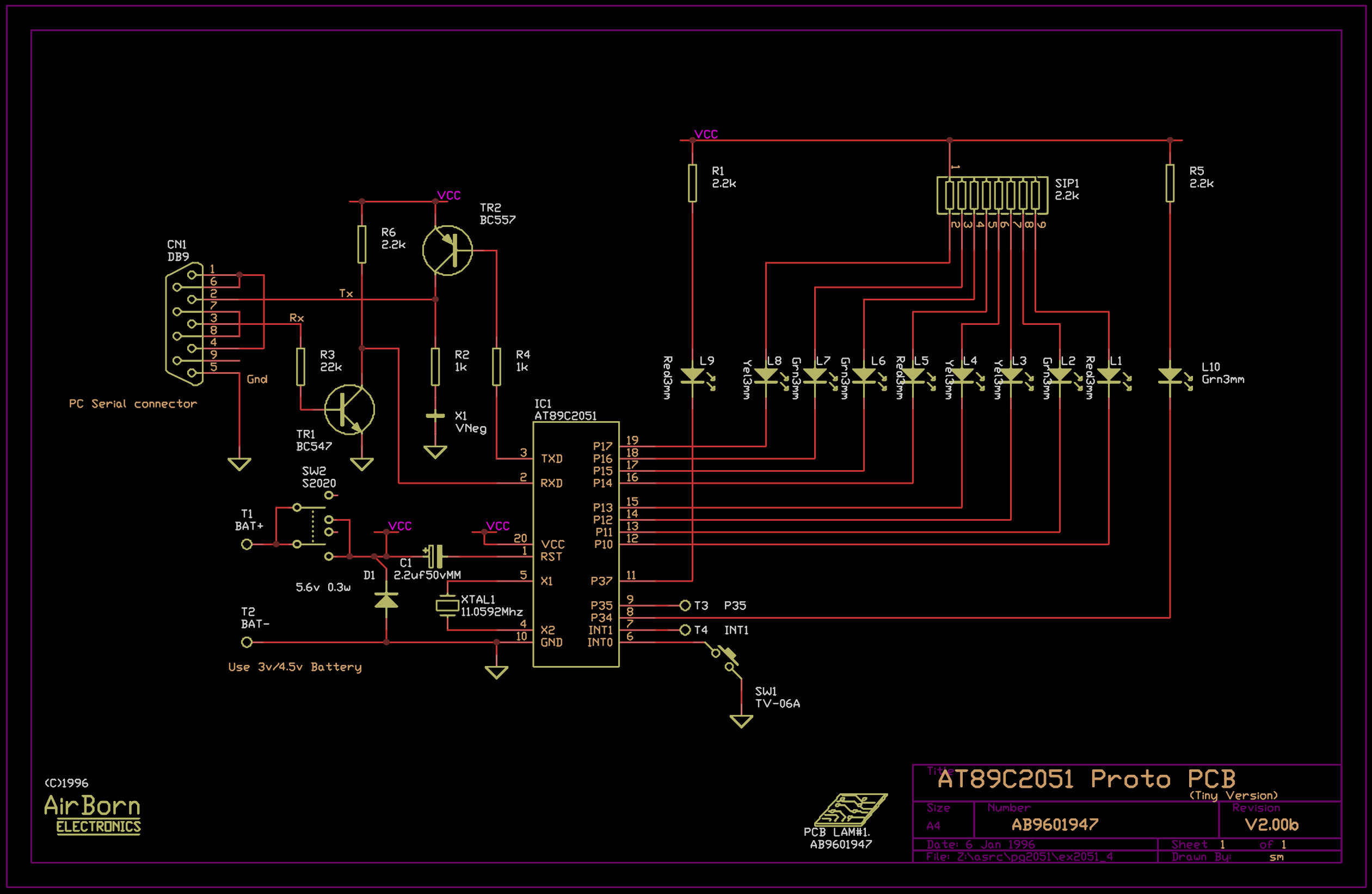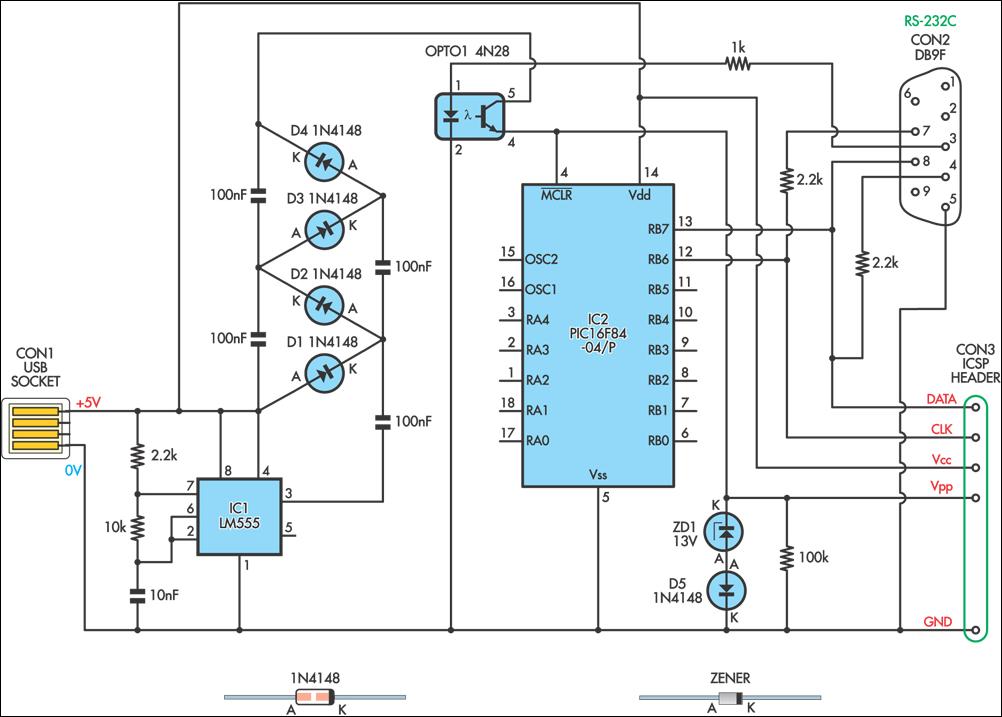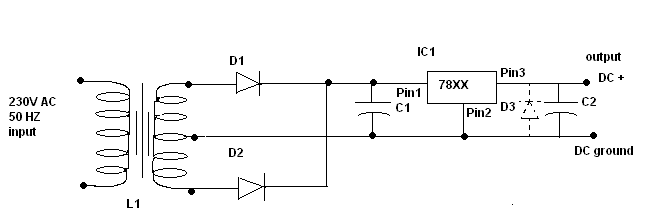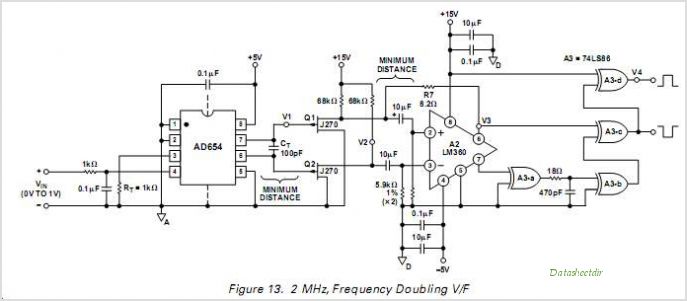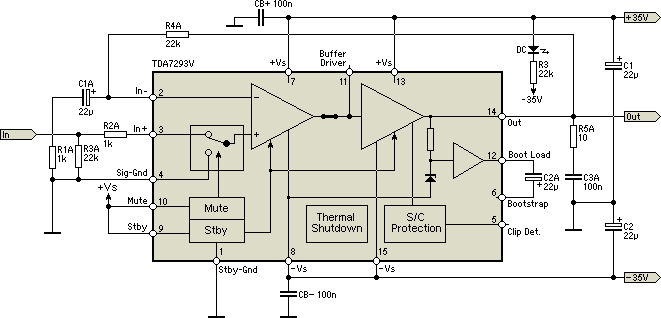
low power inverter using cd4047
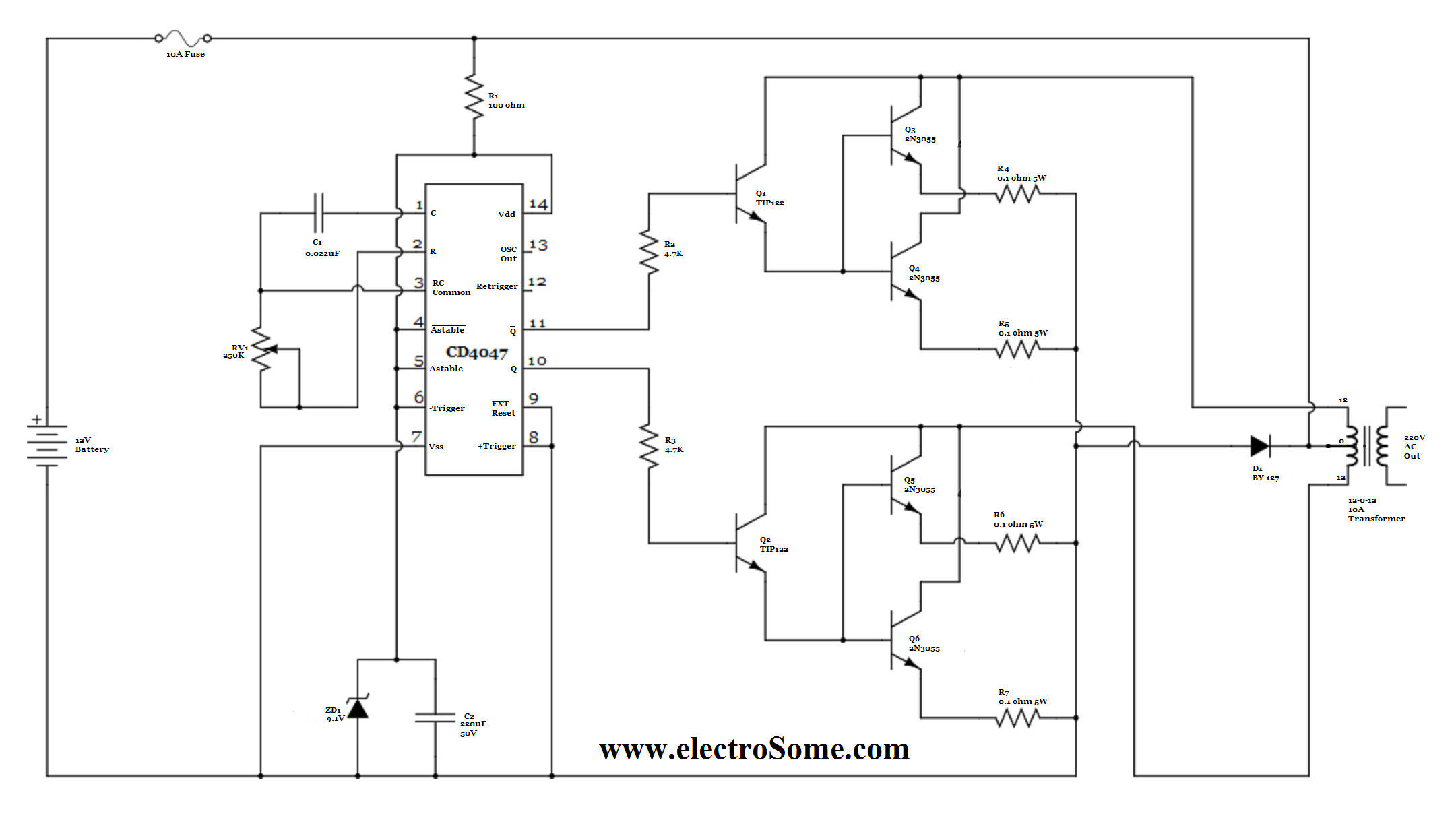
For basic requirements, square wave inverters can be utilized as they are simple, low-cost, and easy to construct. However, pure sine wave inverters are preferred for driving inductive loads. This document discusses a simple low-power square wave inverter using the CD4047 integrated circuit (IC). It does not include a battery charging circuit, which is commonly found in most inverters, and can power loads of up to 100 watts. The CD4047 is a low-power IC that can operate in either astable or monostable mode; in this design, it is configured in astable mode. The operation involves charging a capacitor (C2) through a resistor (RV1), as seen in typical astable multivibrators. A variable resistor (RV1) is included to adjust the output frequency to precisely 50 Hz. The oscillation time period is defined by the equation T = 4.4 * R * C. For a comprehensive understanding of the IC's functionality, consulting the datasheet is recommended. The CD4047 has two outputs (pins 10 and 11) that are complementary to each other. These square wave pulses are pre-amplified by TIP122 transistors, and the amplified current is utilized to activate 2N3055 transistors for driving the inverter transformer. Two 2N3055 transistors are connected in parallel to enhance current driving capabilities. A Zener diode (ZD1) and capacitor (C2) are employed to provide a stable 9V supply for the IC. When the output at pin 10 is low, pin 11 will be high, turning on transistors Q1, Q3, and Q4, allowing current to flow through the upper winding of the transformer, resulting in a positive half-cycle output. Conversely, when the output at pin 10 is high, pin 11 will be low, activating transistors Q2, Q5, and Q6, which allows current to flow through the lower winding of the transformer, producing a negative half-cycle output.
The square wave inverter circuit designed with the CD4047 IC operates efficiently for low power applications, making it suitable for various basic power supply needs. The astable configuration of the CD4047 allows for continuous oscillation, which is essential for generating the square wave output required for inverter operation. The choice of a variable resistor (RV1) enables users to fine-tune the frequency output, ensuring compatibility with standard AC loads that require a 50 Hz input.
The pre-amplification stage using TIP122 transistors is critical for boosting the current levels to drive the 2N3055 power transistors effectively. The configuration of these transistors in parallel not only increases the current handling capacity but also enhances the reliability of the inverter under load conditions. The use of a Zener diode ensures that the voltage supply to the CD4047 remains stable, which is crucial for maintaining consistent operation and performance.
In terms of output waveform, the inverter produces a square wave, which is adequate for resistive loads but may not be ideal for sensitive electronic devices that require a pure sine wave. However, this design serves well in applications where simplicity, cost-effectiveness, and ease of construction are prioritized. Overall, this low-power square wave inverter design using the CD4047 IC demonstrates a practical approach to meeting basic inverter requirements in various applications.For basic requirements we can use Square Wave Inverters which is very simple, low cost and easy to make. But for driving inductive loads pure sine wave inverters are preferred. Here we are dealing with a Simple Low Power Square Wave Inverter using CD4047. It doesn`t include battery charging circuit which is present in most of the inverters. It can be used to power up to 100w. CD4047 is a low power IC capable of operating in either in astable or monostable mode. Here it is wired in astable mode. It works by charging a capacitor (C2) through aG‚resistorG‚(RV1) as in every astable multivibrators. Variable resistor (RV1) is provided for adjusting the output frequency to exact 50Hz. The time period of the oscillation is given by the relation T = 4. 40*R*C. For detailed working of the IC, please refer its datasheet. CD4047 has two outputs (pins 10 and 11) which areG‚complementaryG‚to each other. These square wave pulses are pre amplified by TIP122 transistors. This amplified current is used to switch 2N3055 transistors to drive the inverter transformer. Two 2N3055 transistors are connected in parallel to increase the current driving capabilities. The Zener Diode ZD1 and capacitor C2 is used to provide constant 9V for the IC. When the output at pin 10 is low, pin 11 will be high Q1, Q3, Q4 turns on, current flows through the upper winding of the transformer and we will get positive half cycle output. When the output at pin 10 is high, pin 11 will be low Q2, Q5, Q6 turns on, current flows through the lower winding of the transformer and we will get negative half cycle output.
🔗 External reference
The square wave inverter circuit designed with the CD4047 IC operates efficiently for low power applications, making it suitable for various basic power supply needs. The astable configuration of the CD4047 allows for continuous oscillation, which is essential for generating the square wave output required for inverter operation. The choice of a variable resistor (RV1) enables users to fine-tune the frequency output, ensuring compatibility with standard AC loads that require a 50 Hz input.
The pre-amplification stage using TIP122 transistors is critical for boosting the current levels to drive the 2N3055 power transistors effectively. The configuration of these transistors in parallel not only increases the current handling capacity but also enhances the reliability of the inverter under load conditions. The use of a Zener diode ensures that the voltage supply to the CD4047 remains stable, which is crucial for maintaining consistent operation and performance.
In terms of output waveform, the inverter produces a square wave, which is adequate for resistive loads but may not be ideal for sensitive electronic devices that require a pure sine wave. However, this design serves well in applications where simplicity, cost-effectiveness, and ease of construction are prioritized. Overall, this low-power square wave inverter design using the CD4047 IC demonstrates a practical approach to meeting basic inverter requirements in various applications.For basic requirements we can use Square Wave Inverters which is very simple, low cost and easy to make. But for driving inductive loads pure sine wave inverters are preferred. Here we are dealing with a Simple Low Power Square Wave Inverter using CD4047. It doesn`t include battery charging circuit which is present in most of the inverters. It can be used to power up to 100w. CD4047 is a low power IC capable of operating in either in astable or monostable mode. Here it is wired in astable mode. It works by charging a capacitor (C2) through aG‚resistorG‚(RV1) as in every astable multivibrators. Variable resistor (RV1) is provided for adjusting the output frequency to exact 50Hz. The time period of the oscillation is given by the relation T = 4. 40*R*C. For detailed working of the IC, please refer its datasheet. CD4047 has two outputs (pins 10 and 11) which areG‚complementaryG‚to each other. These square wave pulses are pre amplified by TIP122 transistors. This amplified current is used to switch 2N3055 transistors to drive the inverter transformer. Two 2N3055 transistors are connected in parallel to increase the current driving capabilities. The Zener Diode ZD1 and capacitor C2 is used to provide constant 9V for the IC. When the output at pin 10 is low, pin 11 will be high Q1, Q3, Q4 turns on, current flows through the upper winding of the transformer and we will get positive half cycle output. When the output at pin 10 is high, pin 11 will be low Q2, Q5, Q6 turns on, current flows through the lower winding of the transformer and we will get negative half cycle output.
🔗 External reference
